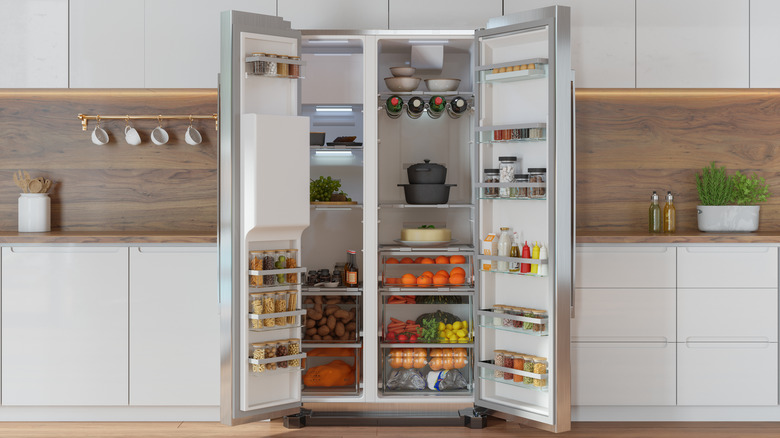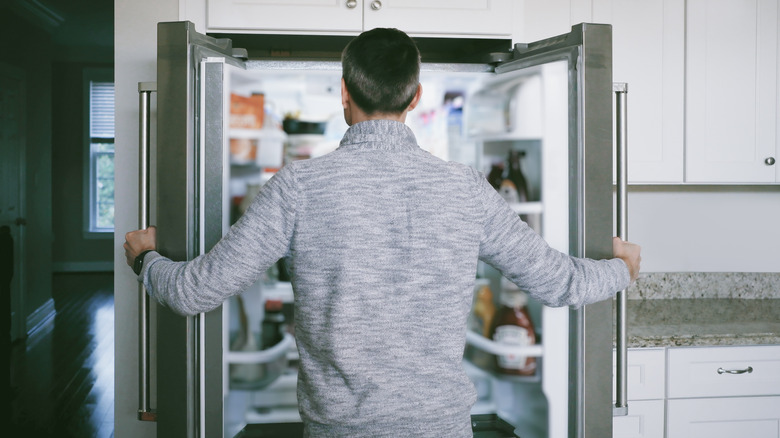The Absolute Best Order To Store Food In Your Fridge
When you get home from the grocery store, how do you store your food in the fridge? If you're scoffing, reconsider the notion, as where certain items go in your refrigerator matters more than you'd think when it comes to keeping them fresh longer. Food spoiling in the fridge stinks, literally and figuratively. One of the best ways to keep your food fresh in the fridge is to organize it by certain shelves.
Most modern fridges have three to four shelves, which are each best for categories of consumables. For example, the top shelf is best for heat-and-eat foods like leftovers and instant meals. This keeps them away from raw items to prevent contamination. The middle shelf section is for dairy and similar foods, since it's colder and helps slow spoilage. The bottom shelf of your fridge is likely the coldest, so it's best for things that need extra refrigeration, like raw meat and fish.
The best way to store broccoli and many other varieties of fresh produce is in the drawer underneath your fridge's shelves, known as the crisper. This section is best for produce since it controls humidity and airflow in your fridge, depending on how you open or close the vent on the drawer. Finally, shelves in the door are best for condiments and other foods that don't spoil easily, since this is the warmest part of the fridge.
More tips for better fridge storage
Of course, how you store your food in the fridge matters too, not just where. Do not overcrowd the fridge, and be sure to leave some space between items. After all, cold air doesn't do much good if there's no airflow to circulate it. In the same vein, take care to not block the vents at the back of the fridge, as that's where the cold enters the appliance. If you find yourself short on room, remove foods that are better off not refrigerated.
While you're at it, pay close attention to your food's expiration dates. While expiration dates on food don't always mean what you think, and all foods have different lifespans, it's still advisable to use ingredients before their sell-by date. So, take a tip from your local grocery store and rotate your fridge's contents by date, with foods that are closer to expiring front and center so you are more apt to use them. Those with dates farther out can sit in the back.
Finally, clean your refrigerator regularly. Bacteria like listeria can grow surprisingly well in your fridge despite the cold air. Raw meat is the biggest potential offender in your fridge when it comes to bacteria and cross-contamination, so keep it wrapped at all times and always clean up any spills immediately. This is another reason raw meat is best kept on the bottom shelf, as there's little below the meat to get contaminated if a leak occurs.

